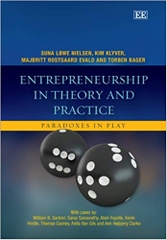-
-
-
Tổng tiền thanh toán:
-
-
Thông tin
-
Tìm sách theo yêu cầu
An innovation classic. From Steve Jobs to Jeff Bezos, Clay Christensen’s work continues to underpin today’s most innovative leaders and organizations.
The bestselling classic on disruptive innovation, by renowned author Clayton M. Christensen.
His work is cited by the world’s best-known thought leaders, from Steve Jobs to Malcolm Gladwell. In this classic bestseller—one of the most influential business books of all time—innovation expert Clayton Christensen shows how even the most outstanding companies can do everything right—yet still lose market leadership.
Christensen explains why most companies miss out on new waves of innovation. No matter the industry, he says, a successful company with established products will get pushed aside unless managers know how and when to abandon traditional business practices.
Offering both successes and failures from leading companies as a guide, The Innovator’s Dilemmagives you a set of rules for capitalizing on the phenomenon of disruptive innovation.
Sharp, cogent, and provocative—and consistently noted as one of the most valuable business ideas of all time—The Innovator’s Dilemma is the book no manager, leader, or entrepreneur should be without.
- Link: http://www.amazon.com/Innovators-Dilemma-Technologies-Management-Innovation/dp/142219602X
The bestselling classic on disruptive innovation, by renowned author Clayton M. Christensen.
His work is cited by the world’s best-known thought leaders, from Steve Jobs to Malcolm Gladwell. In this classic bestseller—one of the most influential business books of all time—innovation expert Clayton Christensen shows how even the most outstanding companies can do everything right—yet still lose market leadership.
Christensen explains why most companies miss out on new waves of innovation. No matter the industry, he says, a successful company with established products will get pushed aside unless managers know how and when to abandon traditional business practices.
Offering both successes and failures from leading companies as a guide, The Innovator’s Dilemmagives you a set of rules for capitalizing on the phenomenon of disruptive innovation.
Sharp, cogent, and provocative—and consistently noted as one of the most valuable business ideas of all time—The Innovator’s Dilemma is the book no manager, leader, or entrepreneur should be without.
Product Details
- Series: Management of Innovation and Change
- Hardcover: 288 pages
- Publisher: Harvard Business Review Press; Reprint edition (November 19, 2013)
- Language: English
- ISBN-10: 142219602X
- ISBN-13: 978-1422196021
- Product Dimensions: 9.3 x 6.4 x 1 inches
- Shipping Weight: 1.2 pounds (View shipping rates and policies)
- Average Customer Review: 4.4 out of 5 stars See all reviews (182 customer reviews)
- Amazon Best Sellers Rank: #21,928 in Books (See Top 100 in Books)
- #6 in Books > Business & Money > Management & Leadership > Industrial
- #29 in Books > Business & Money > Industries & Professions > Customer Service
- #94 in Books > Business & Money > Management & Leadership > Systems & Planning
Editorial Reviews
Amazon.com Review
What do the Honda Supercub, Intel's 8088 processor, and hydraulic excavators have in common? They are all examples of disruptive technologies that helped to redefine the competitive landscape of their respective markets. These products did not come about as the result of successful companies carrying out sound business practices in established markets. In The Innovator's Dilemma, author Clayton M. Christensen shows how these and other products cut into the low end of the marketplace and eventually evolved to displace high-end competitors and their reigning technologies.
At the heart of The Innovator's Dilemma is how a successful company with established products keeps from being pushed aside by newer, cheaper products that will, over time, get better and become a serious threat. Christensen writes that even the best-managed companies, in spite of their attention to customers and continual investment in new technology, are susceptible to failure no matter what the industry, be it hard drives or consumer retailing. Succinct and clearly written, The Innovator's Dilemma is an important book that belongs on every manager's bookshelf. Highly recommended. --Harry C. Edwards --This text refers to an out of print or unavailable edition of this title.
From Booklist
The author, an associate professor at Harvard Business School, asks why some well-managed companies that stay on top of new technology and practice quality customer service can still falter. His own research brought a surprising answer to that question. Christensen suggests that by placing too great an emphasis on satisfying customers' current needs, companies fail to adapt or adopt new technology that will meet customers' unstated or future needs, and he argues that such companies will eventually fall behind. Christensen calls this phenomenon "disruptive technology" and demonstrates its effects in industries as diverse as the manufacture of hard-disk drives and mass retailing. He goes on to offer solutions by providing strategies for anticipating changes in markets. This book is another in the publisher's Management of Innovation and Change series. David Rouse --This text refers to an out of print or unavailable edition of this title.
Most Helpful Customer Reviews
334 of 349 people found the following review helpfulBy Coert Visser on November 13, 2001
Format: Hardcover
This is a book is about successful, well-led companies -often market leaders- that carefully pay attention to what customers need and that invest heavily in new technologies, but still loose their market leadership suddenly. This can happen when disruptive technologies enter the stage. Most technologies improve the performance of existing products in relation to the criteria which existing customers have always used. These technologies are called sustaining technologies. Disruptive technologies do something different. They create an entirely new value proposition. They improve the performance of the product in relation to new performance criteria. Products which are based on disruptive technologies are often smaller, cheaper, simpler, and easier to use. However, the moment they are introduced, they can not at once compete against the traditional products and so they cannot directly reach a big market. Christensen researched how disruptive technologies have developed in the computer disk industry, an extremely rapid evolving industry. He identified six steps in the emergence of disruptive technologies:
1. Disruptive technologies often are invented in traditional large companies. Example: at Seagate Technology, the biggest producer of 5,25 disks, engineers in 1985 designed the first 3,5 disk.
2. The marketing department examines first reactions from important customers to the new technology. Then they notice that existing customers are not very interested and they conclude that not a lot of money can be made with the new product. Example: this is what happened at Seagate. The 3,5 disk's were put upon the shelf.
3. The company keeps on investing in the traditional technology. Performance improvement of the traditional technology is highly appreciated by existing customers and a lot of money is being made. Example: Seagate invested in the 5,25 disk technology. This led to considerable improvement of the technology and to a considerable improvement of sales.
4. New companies are started up (by ex-employees of the traditional companies) and markets for the new technology emerge by trial and error. Example: ex-Seagate people started up Corner Peripherals. This company focused on the small emerging market for 3,5 inch disks. In the beginning this was only for the laptop market.
5. The new players move up in the market. The performance of the new technologies gets better after some time, enabling them to compete better and better with the traditional companies and products. Example: the performance of the 3,5 disks improved drastically. The 3,5 inch disk moved up in the market, to the personal computer market. Corner pushed Seagate out of the PC market for 3,5 inch disk drives.
6. Traditional companies try to defend their market position and to get along in the new market. Often they notice that they have fallen behind so far, that they cannot keep up. Example: Seagate did not succeed in capturing a significant part of the new market for 3,5 inch disk drives for PC's.
The events described above can be understood by the four principles of disruptive technologies which Christensen formulates:
1. In well-led companies it is customers, not managers, who actually determine resources allocation. This is a proposition of the resources dependence theory (Pfeffer & Salancik, 1978) which is supported strongly by the research of Christensen. In essence: middle managers will not tend to invest in technologies that are not directly appreciated by important (large) clients, because they will not be able to get quick financial gains by doing this.
2. Small markets can not fulfil the growth need of large companies. For several reasons, growth is important for companies. Unfortunately, the bigger the company, the harder it is to continue growth. A small company (40 million sales) with a growth target of 20%, must achieve 8 million extra sales. A large company (4 billion sales), has to achieve 800 million of extra sales! Emerging markets often simply are not large enough to fulfil such growth needs. They can, however, fulfil the growth needs of new small companies.
3. Markets that do not exist can not be analysed. The ultimate applications of disruptive technologies can not be foreseen on forehand. Failure is an intrinsic unavoidable step to success.
4. Technology supply does not always equal the market demand. The speed of technological progress is often bigger than the speed with which the customer demand develops. By improving the performance of the disruptive technologies (for instance the 3,5 inch disks, first only used in the laptop market), they became suitable for the larger PC-market.
These steps explain why traditional companies are often not capable of applying disruptive technologies. Christensen argues that you can not resist these four principles. What you can do however, is use them to your advantage. For instance: in a large company you can create an 'island' where the new technology is developed for the new market. Also it is possible get an ownership in emerging companies which develop the new technologies (several companies have done this successfully).
I think the innovator's Dilemma is an excellent book. The ideas are empirically foudend and together they form a coherent theoretical framework. The examples from the computer disk industry, the steel industry and others, are very well-documented and interesting. The book is logically structured and reads easily.
1. Disruptive technologies often are invented in traditional large companies. Example: at Seagate Technology, the biggest producer of 5,25 disks, engineers in 1985 designed the first 3,5 disk.
2. The marketing department examines first reactions from important customers to the new technology. Then they notice that existing customers are not very interested and they conclude that not a lot of money can be made with the new product. Example: this is what happened at Seagate. The 3,5 disk's were put upon the shelf.
3. The company keeps on investing in the traditional technology. Performance improvement of the traditional technology is highly appreciated by existing customers and a lot of money is being made. Example: Seagate invested in the 5,25 disk technology. This led to considerable improvement of the technology and to a considerable improvement of sales.
4. New companies are started up (by ex-employees of the traditional companies) and markets for the new technology emerge by trial and error. Example: ex-Seagate people started up Corner Peripherals. This company focused on the small emerging market for 3,5 inch disks. In the beginning this was only for the laptop market.
5. The new players move up in the market. The performance of the new technologies gets better after some time, enabling them to compete better and better with the traditional companies and products. Example: the performance of the 3,5 disks improved drastically. The 3,5 inch disk moved up in the market, to the personal computer market. Corner pushed Seagate out of the PC market for 3,5 inch disk drives.
6. Traditional companies try to defend their market position and to get along in the new market. Often they notice that they have fallen behind so far, that they cannot keep up. Example: Seagate did not succeed in capturing a significant part of the new market for 3,5 inch disk drives for PC's.
The events described above can be understood by the four principles of disruptive technologies which Christensen formulates:
1. In well-led companies it is customers, not managers, who actually determine resources allocation. This is a proposition of the resources dependence theory (Pfeffer & Salancik, 1978) which is supported strongly by the research of Christensen. In essence: middle managers will not tend to invest in technologies that are not directly appreciated by important (large) clients, because they will not be able to get quick financial gains by doing this.
2. Small markets can not fulfil the growth need of large companies. For several reasons, growth is important for companies. Unfortunately, the bigger the company, the harder it is to continue growth. A small company (40 million sales) with a growth target of 20%, must achieve 8 million extra sales. A large company (4 billion sales), has to achieve 800 million of extra sales! Emerging markets often simply are not large enough to fulfil such growth needs. They can, however, fulfil the growth needs of new small companies.
3. Markets that do not exist can not be analysed. The ultimate applications of disruptive technologies can not be foreseen on forehand. Failure is an intrinsic unavoidable step to success.
4. Technology supply does not always equal the market demand. The speed of technological progress is often bigger than the speed with which the customer demand develops. By improving the performance of the disruptive technologies (for instance the 3,5 inch disks, first only used in the laptop market), they became suitable for the larger PC-market.
These steps explain why traditional companies are often not capable of applying disruptive technologies. Christensen argues that you can not resist these four principles. What you can do however, is use them to your advantage. For instance: in a large company you can create an 'island' where the new technology is developed for the new market. Also it is possible get an ownership in emerging companies which develop the new technologies (several companies have done this successfully).
I think the innovator's Dilemma is an excellent book. The ideas are empirically foudend and together they form a coherent theoretical framework. The examples from the computer disk industry, the steel industry and others, are very well-documented and interesting. The book is logically structured and reads easily.
XEM THÊM TẠI AMAZON.COM
- Thông tin chi tiết
- Mục lục
- Đọc thử
- Đọc thử
- Đánh giá & bình luận của người mua
- Những cuốn sách cùng chủ đề hoặc có liên quan
Tại web chỉ có một phần nhỏ các đầu sách đang có nên nếu cần tìm sách gì các bạn có thể liên hệ trực tiếp với Thư viện qua Mail, Zalo, Fanpage nhé
Đăng ký nhận tin qua email
Hãy đăng ký ngay hôm nay để nhận được những tin tức cập nhật mới nhất về sản phẩm và các chương trình giảm giá, khuyến mại của chúng tôi.












